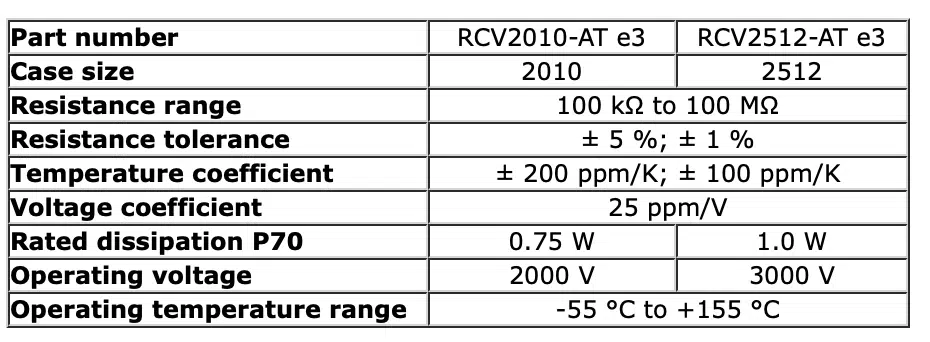Replacing Standard Resistor Chains, AEC-Q200 Qualified Devices Offer Operating Voltages Up to 3 kV in 2010 and 2512 Case Sizes.
Vishay introduced a new series of AEC-Q200 qualified thick film chip resistors with operating voltages up to 3 kV in the 2010 and 2512 case sizes.
With their high operating voltages, devices in the Vishay Draloric RCV-AT e3 series can be used in place of standard resistor chains. This allows designers to save board space in inverters for electric (EV) and hybrid electric (HEV) vehicles, on-board chargers, and DC/DC converters while lowering component counts and reducing placement costs.
The RCV-AT e3 series features a resistance range from 100 kΩ to 100 MΩ, with tolerances of ± 1 % and ± 5 % and TCR of ± 100 ppm/K and ± 200 ppm/K. The resistors offer power ratings up to 1.0 W, a low voltage coefficient of resistance of 25 ppm/V, and an operating temperature range of -55 °C to +155 °C.
RoHS-compliant and halogen-free, the devices are suitable for processing on automatic surface-mount assembly systems and for wave, reflow, or vapor phase soldering per IEC 61760-1.
Device Specification Table:
Samples and production quantities of the RCV-AT e3 series are available now, with lead times of 10 weeks.
































